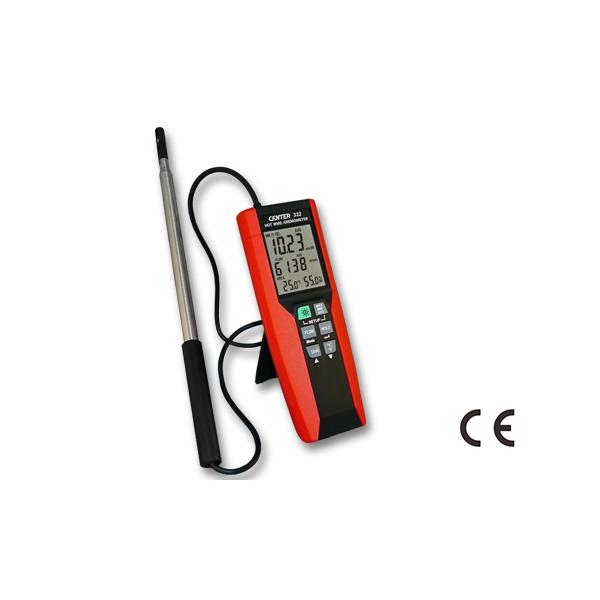Comparing Digital and Mechanical Anemometers: Which is Right for You?
Comparing Digital and Mechanical Anemometers: Which is Right for You?
Blog Article
Exploring the Functions and Advantages of Anemometers for Weather Enthusiasts and Professionals
Anemometers stand as instrumental tools in the world of weather condition surveillance, dealing with both lovers and seasoned specialists alike. These tools provide a home window right into the dynamic world of wind patterns and rates, providing invaluable data for meteorological analysis and projecting. From cup anemometers to sonic anemometers, each kind brings its special collection of applications and advantages, clarifying different facets of weather. As we explore the features and advantages of anemometers, a much deeper understanding arises not just of prevailing weather sensations however also of the wider implications for sectors like wind energy manufacturing and environmental study.
Importance of Anemometers in Weather Tracking
Anemometers play an important duty in climate tracking by offering accurate dimensions of wind speed, helping in forecasting and understanding weather condition patterns. These tools, varying from typical cup anemometers to modern-day ultrasonic anemometers, are necessary for meteorologists, researchers, and weather fanatics alike. By measuring wind rate, anemometers assist in establishing the strength of weather condition phenomena such as tornados, hurricanes, and twisters. In addition, they give beneficial data for air travel, maritime operations, and different sectors that are sensitive to wind conditions.

Types of Anemometers and Their Applications
The most usual kinds of anemometers consist of cup anemometers, vane anemometers, hot-wire anemometers, and ultrasonic anemometers. Cup anemometers are composed of three or four cups placed on straight arms that turn with the wind, measuring its rate. Vane anemometers, on the other hand, use an openly revolving vane to straighten with the wind direction, providing both wind speed and direction measurements.
Each type of anemometer has its one-of-a-kind benefits and applications. Cup anemometers are ideal and durable for general climate monitoring, while vane anemometers are favored for directional measurements. Hot-wire anemometers are sensitive to reduced air rates, making them ideal for indoor settings. Ultrasonic anemometers are non-intrusive and offer high precision, often made use of in research and specialized weather condition monitoring applications. Understanding the features and applications of each type of anemometer is crucial for picking the most proper instrument for specific weather condition monitoring requirements.
Advantages of Making Use Of Anemometers in Projecting
In meteorology, the application of anemometers provides invaluable benefits for improving the accuracy of weather condition forecasting. Anemometers measure wind speed and direction, providing critical data for predicting weather patterns. By including wind information into projecting versions, meteorologists can much better comprehend the motion of climate systems, prepare for modifications in climatic problems, and issue more official site specific projections.
In addition, anemometers play a crucial duty in examining prospective weather threats. Checking wind speeds aids forecasters predict severe weather condition occasions such as cyclones, hurricanes, and wintertime storms with greater precision. This very early caution system enables authorities to provide prompt signals and implement needed precaution, reducing the dangers to life and home.
In addition, anemometers help in maximizing eco-friendly power production. By analyzing wind patterns, meteorologists can determine ideal areas for wind ranches and predict power outcome, contributing to the effective generation of wind power.

Anemometers in Wind Power Production
Provided the crucial role anemometers play in offering accurate wind data for weather forecasting and hazard analysis, their relevance includes the world of wind energy manufacturing. Anemometers are vital tools in the area of wind energy, where the dimension of wind speed and instructions is vital for establishing the feasibility and effectiveness of wind turbine installations. By properly measuring wind speeds at differing elevations, anemometers assist maximize the placement and style of wind generators to take full advantage of power result.
In wind his comment is here farms, anemometers are strategically placed to collect real-time wind information that is utilized to examine the potential power production of a site. This data is important in establishing the economic feasibility of wind energy projects my latest blog post and in projecting energy generation to guarantee grid stability. Additionally, anemometers help in keeping track of wind conditions to enhance turbine performance, protect against damage from high winds, and make sure the security of personnel functioning in the location of wind generators.
Enhancing Weather Condition Comprehending With Anemometers

Anemometers play a crucial duty in boosting our understanding of microclimates. These local weather conditions can differ substantially from broader regional projections, making it important to have precise data for details locations. anemometer. By tactically placing anemometers in various locations, researchers can collect detailed info on exactly how wind acts in various surfaces, city environments, or bodies of water
Moreover, anemometers add to enhancing weather condition forecasting models by supplying real-time information on wind habits. This details is particularly valuable for forecasting severe climate occasions, enhancing agricultural methods, and sustaining sectors like aeronautics and maritime navigation. In general, anemometers are invaluable instruments that enable us to dig much deeper right into the intricacies of climate systems, ultimately resulting in more precise predictions and better-informed decisions.
Conclusion
In verdict, anemometers play an essential role in weather tracking and forecasting by gauging wind speed and direction. Anemometers likewise have applications in wind energy production, further highlighting their importance in both meteorology and eco-friendly energy fields.
From mug anemometers to sonic anemometers, each kind brings its distinct collection of applications and advantages, shedding light on various elements of climatic conditions. These instruments, varying from traditional mug anemometers to contemporary ultrasonic anemometers, are necessary for meteorologists, scientists, and climate fanatics alike. The most usual types of anemometers consist of cup anemometers, vane anemometers, hot-wire anemometers, and ultrasonic anemometers. Cup anemometers are appropriate and robust for basic climate monitoring, while vane anemometers are preferred for directional dimensions. Anemometers are important instruments in the field of wind power, where the measurement of wind speed and direction is important for determining the expediency and effectiveness of wind turbine setups.
Report this page